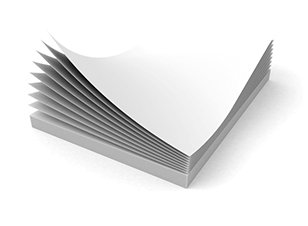 Choosing the right paper stock for your print jobs is an important task. After all, paper can tell a lot about your product and your business. Your choice of stock can also play a crucial role when it comes to helping you cut through all that clutter your targets see on a day to day basis.
Choosing the right paper stock for your print jobs is an important task. After all, paper can tell a lot about your product and your business. Your choice of stock can also play a crucial role when it comes to helping you cut through all that clutter your targets see on a day to day basis.
So here are some of the things you need to consider when it comes to making the right paper selection.
5 Things to Consider When Choosing the Right Paper Stock
1. Purpose and lifespan
It’s important to think of the purpose and lifespan of your printed piece to work out the right paper stock. For example, a brochure, catalogue or annual report would require a heavier, more durable stock as it is going to be around for a longer time and accessed by more people as opposed to a direct mail piece that might just get a cursory glance and not be around for as long.
2. Right for your brand
You also want your printed piece to make the right impression and feeling when it gets into the hands of your targets. If you’re a business who prides itself on being environmentally conscious then a commitment to recycled or carbon neutral stock would work best for you. On the other hand, if you want promote luxury then premium stock and using metallics, linens and other speciality papers are what you need to promote the right image.
3. Colour and brightness
Even when printing on white paper – you have a range of colour options from warm shades to cool and it’s important to choose carefully as not every white fits every purpose. For example, skin tones should be printed on a warm-white stock as if you chose blue-white paper, even the healthiest of people would come across as grey in appearance. Paper brightness (i.e. the amount of blue light reflected) is also a factor as it can affect readability, the perception of colours and the contrast between dark and light hues.
4. Coated or uncoated
The choice you make in relation to coated or uncoated paper is another factor affecting the overall feel of your product. Coated paper is available in a range of smoothness such as silk, gloss, matte and semi-matte. It generally works well for print collateral that contains lots of photographs and illustrations or when you really want colours to pop. Uncoated paper reflects less light so is great for anything with lots of texts such as books, reports and magazines that you need to be able to read easily.
5. Thickness and weight
The thickness and weight of the stock used for your print jobs comes down to the end product and usage, the required finish and the amount of ink used on the page.
Your quick guide to stock weight and usage
- 90 – 100gsm: Used for stationery, text for magazines and booklets, as well as flyers and brochures.
- 120 – 170gsm: Ideal for booklets, flyers and brochures (the heavier the weight of the stock – the more upmarket the feel). 150gsm – 170gsm is also a great stock for posters.
- 200 – 250gsm: Perfect for magazine and booklet covers.
- 205gsm paper or 220gsm vinyl: Good choices for wide format posters.
- 280 – 420gsm: Used for cards of all sorts and book and booklet covers.
A word about poster printing
When it comes to choosing the right stock for your business posters, it’s important to think about where they are likely to be displayed. If they are going to be outside then you need a durable stock that is not going to fade in the sun. A heavier stock is always going to do better against the elements, so think about how durable you need the poster to be. A coated paper is also going to show off colour and images more effectively as well as be more resistant to dirt and potential damage.
For advice on the right stock to suit your business and budget, speak to the team at your local Kwik Kopy today


